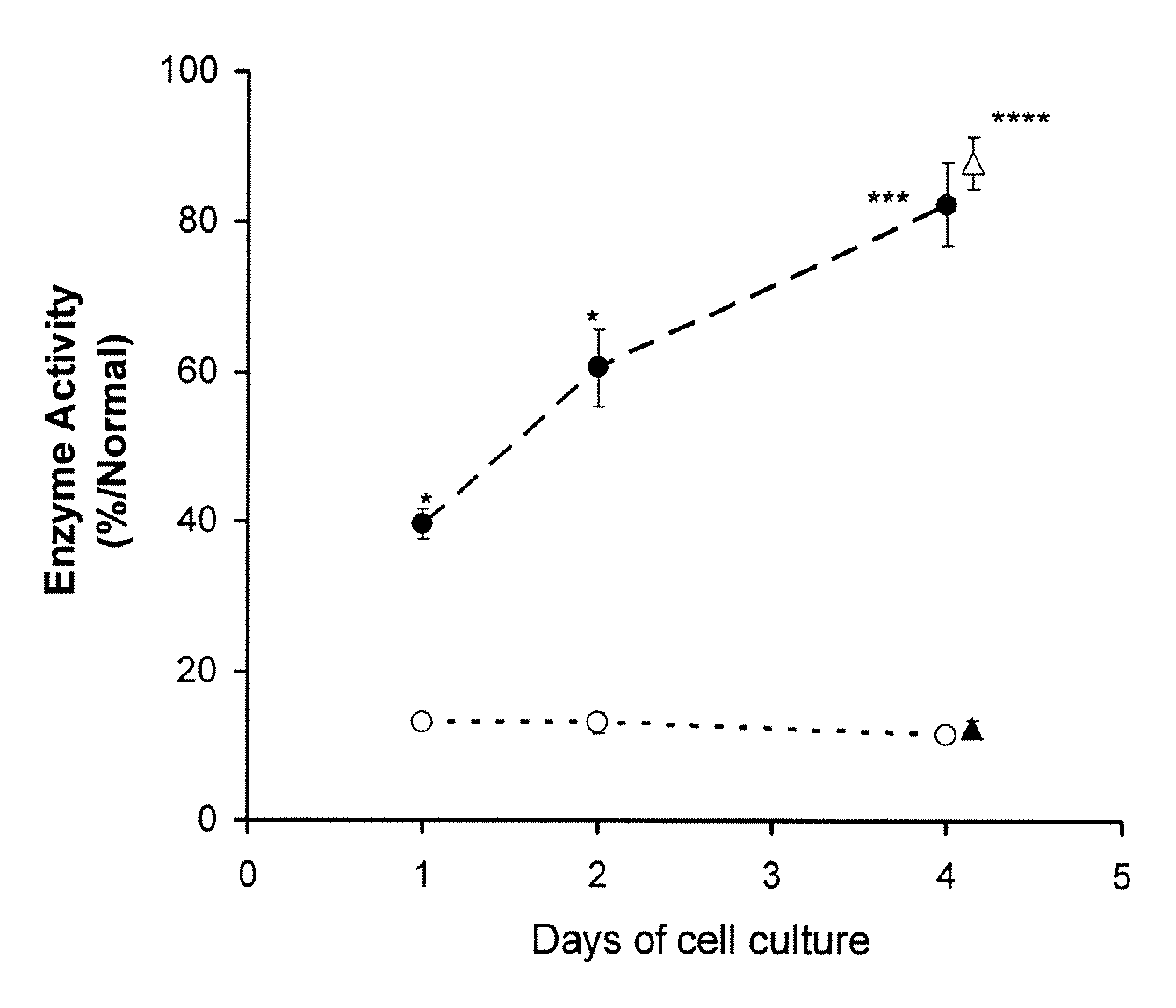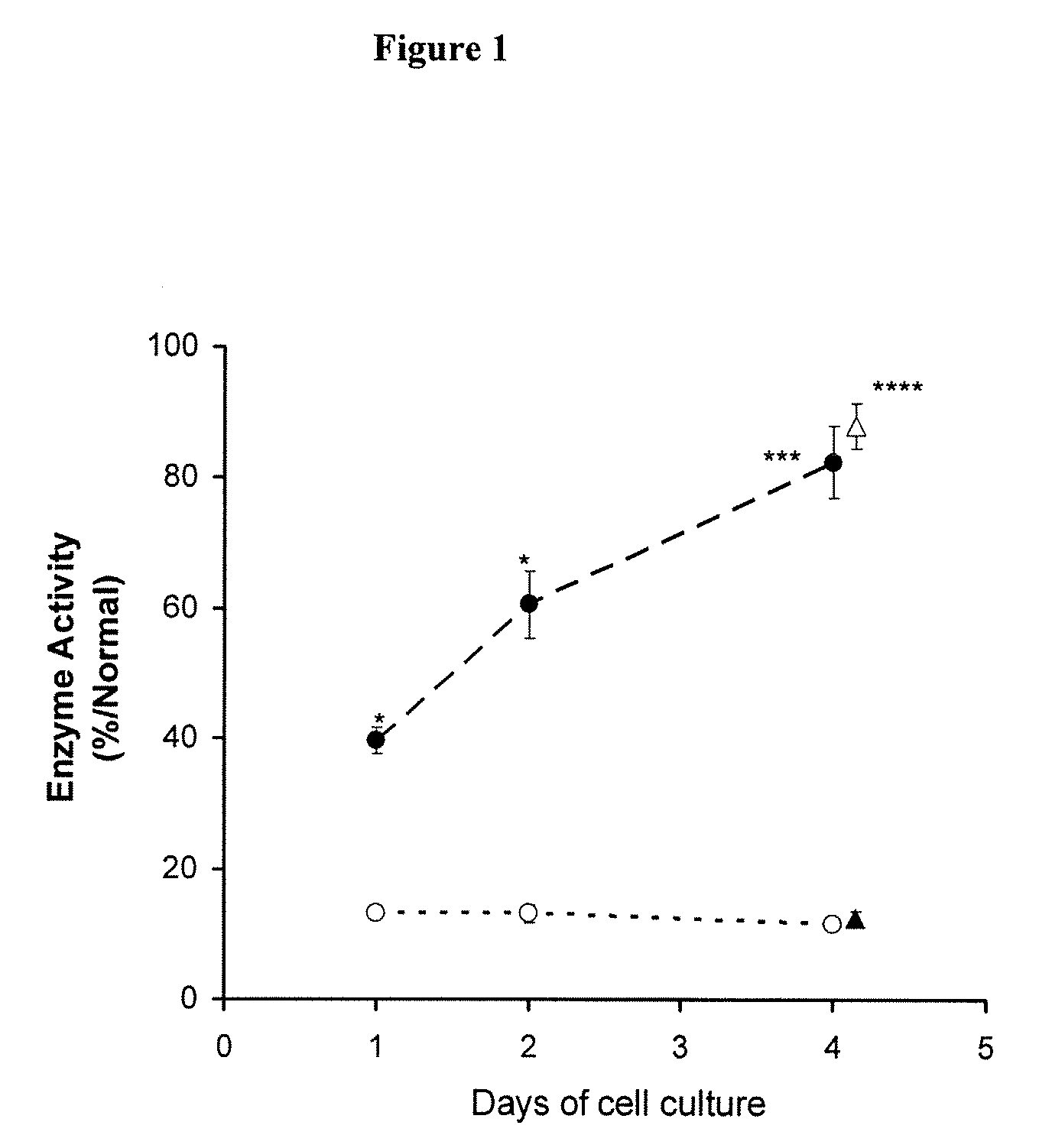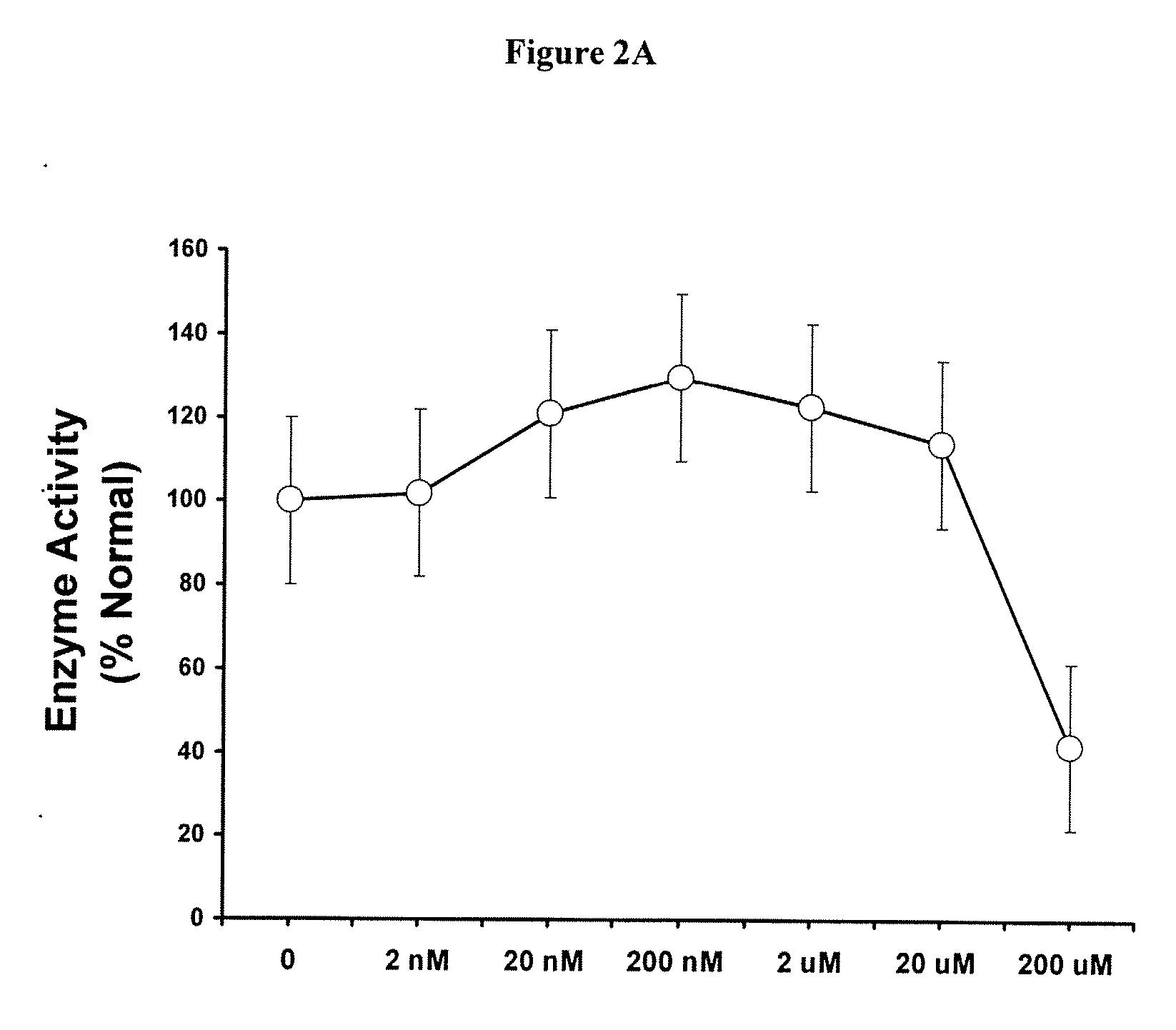Assays For Diagnosing And Evaluating Treatment Options For Fabry Disease
a technology of fabry disease and treatment options, applied in the direction of drug compositions, instruments, metabolic disorders, etc., can solve the problems of increased risk of heart attack and stroke, severe symptoms, kidney failure,
- Summary
- Abstract
- Description
- Claims
- Application Information
AI Technical Summary
Benefits of technology
Problems solved by technology
Method used
Image
Examples
example 1
In Vitro Method for Evaluating Effects of an SPC on α-GAL Activity
[0099] The present Example provides the in vitro diagnostic assay to determine a Fabry patient's responsiveness to a specific pharmacological chaperone.
A. Preparation of Human WBC Pellets for Growth of T Lymphocytes
[0100] 1. Materials: [0101] CPT tube: Becton-Dickenson (BD Vacutainer® CPT™ Cell Preparation Tube with Sodium Citrate, cat #362761). [0102] Human IL-2 (recombinant), PreProTECH, cat #200-02 [0103] Phytohemagglutinin (M Form) (PHA), liquid, Invitrogen, cat #10576-015 [0104] RPMI-1640 medium, Mediatech Inc., cat #10-040-CV Fetal Bovine Serum, Mediatech Inc., cat #35-010-CV [0105] Citric acid, monohydrate, ACS, Mallinckrodt, cat #0627 [0106] Sodium phosphate dibasic (Na2HPO4), ACS, Mallinckrodt cat #7917 [0107] Sodium hydroxide, volumetric solution ION, Mallinckrodt cat #H385 [0108] Phosphoric acid, ACS, Mallinckrodt cat #PX0995-3 [0109] 4-MU α-D-galactopyranoside (4-MU-Gal), Sigma cat #M-7633 N-Acetyl-D-g...
example 2
In Vivo Method for Evaluating Effects of an SPC on α-GAL Activity
[0173] This example describes results from an open label Phase II study of DGJ in Fabry patients (n=11) with 10 different α-GAL mutations and supports the use of the in vivo assay. The patients were selected for the Phase II study based on the increase in α-GAL activity in the T-cell assay described above. The genotypes were as follows: T41L (2 patients); A143T; A97V; M51K; S276G; L300P; G328A; P205T; N215S; and L415P.
[0174] Some patients (8) were administered DGJ according to the following dosing schedule: 25 mg b.i.d. two weeks; 100 mg b.i.d. weeks 2-4; 250 mg b.i.d. weeks 4-6; and 25 mg b.i.d. weeks 6-12. Three patients received 150 mg of DGJ every other day throughout the entire study. Blood was draw into an 8 mL Vacutainer CPT tube at the end of each dosing period and treated as described below.
A. Preparation of Human WBC Pellets for Assay
[0175] WBCs were prepared substantially as described in Example 1, with...
PUM
| Property | Measurement | Unit |
|---|---|---|
| Fraction | aaaaa | aaaaa |
| Fraction | aaaaa | aaaaa |
| Fraction | aaaaa | aaaaa |
Abstract
Description
Claims
Application Information
 Login to View More
Login to View More - R&D
- Intellectual Property
- Life Sciences
- Materials
- Tech Scout
- Unparalleled Data Quality
- Higher Quality Content
- 60% Fewer Hallucinations
Browse by: Latest US Patents, China's latest patents, Technical Efficacy Thesaurus, Application Domain, Technology Topic, Popular Technical Reports.
© 2025 PatSnap. All rights reserved.Legal|Privacy policy|Modern Slavery Act Transparency Statement|Sitemap|About US| Contact US: help@patsnap.com



